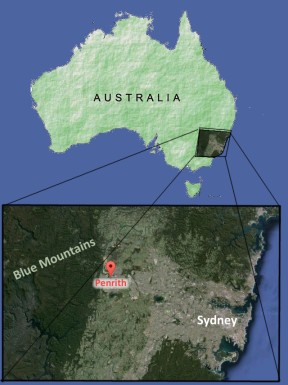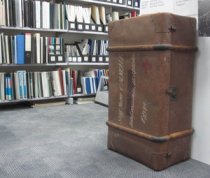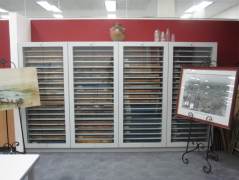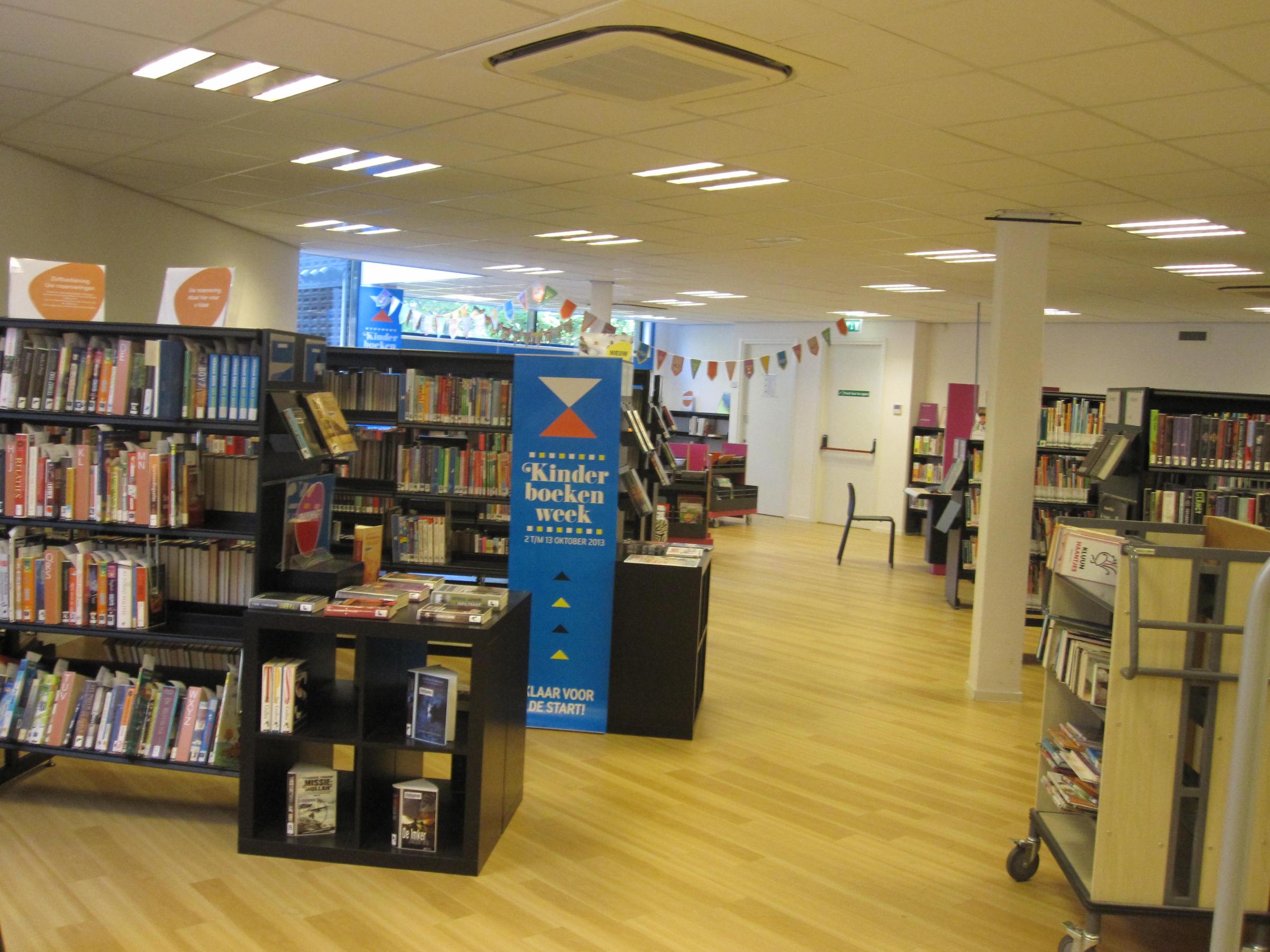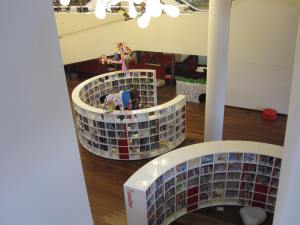- Collections
- Formats
- Genres
- Dewey decimal classes and subjects
- Library terminology
Collections
English |
French |
| Christmas Collection | La collection sur Noël |
| Encyclopedias | Encyclopédies (f) |
| English Language Learning | Apprentissage de l’anglais (m) |
| Fiction | Romans (m) |
| French Language Learning | Apprentissage du français (m) |
| Graphic Novels | Bandes dessinées (f) |
| Language Learning | Apprentissage des langues (m) |
| Magazines
Current, back issues |
Périodiques (m)
Numéro courant, numéros antérieurs |
| Multimedia | Multimédia (m) |
| Museum Passes | Laissez-passer pour musées (m) |
| Music | Musique (m) |
| Non Fiction | Documentaires
Non-fiction |
| Picture Books | Albums (m) |
| Reference | Référence (f) |
| Reference Magazines | Périodiques de référence (m) |
| Special Picture Books | Albums spéciaux (m) |
| Teen Fiction | Romans pour ados (m) |
Formats
English |
French |
| Audio Book | Le livres audio |
| Board Book | Un albums cartonné |
| Book on CD | Le livre sur CD |
| DVD with described video | Le DVD avec vidéodescription |
| DVD | Le DVD |
| Early Reader | La première lecture |
| eBook | Le livre numérique |
| Large Print | Le livre en gros caractères |
| Lift-the-flap book | Le livre animé |
| Multilingual | Multilingue |
| Newspaper | Le journal (les journaux) |
| Novel | Le roman |
| Paperback | Le livre de poche |
| Video Game | Le jeu vidéo (les jeux vidéo) |
Genres
English |
French |
| Blues / R&B / Soul (music) | Blues / R&B / Soul (adj) |
| Celebration (music) | Célébration (adj) |
| Chick Lit | La littérature féminine |
| Children’s Music | La musique pour enfants |
| Christian Fiction | Romans chrétiens (m) |
| Christmas (music) | Noël (adj) |
| Christmas fiction | Romans de Noël (m) |
| Classic novels | Romans classiques (m) |
| Country (music) | Country (adj) |
| Crime | Le crime
Romans policiers (m) |
| Dance (music) | Danse (adj) |
| Educational (music) | Éducative (adj) |
| Exercise (music) | Exercice (adj) |
| Fantasy | Le fantastique |
| Film / TV (music) | Film / TV |
| Folk (music) | Folk |
| Hip-Hop / Rap (music) | Hip-Hop / Rap |
| Historical Romance | La romance historique |
| Horror | Le roman d’horreur |
| Jazz (music) | Jazz |
| Lullaby (music) | La berceuse |
| Musicals (music) | La comédie musicale |
| Mystery | Le mystère |
| New Age (music) | Nouvel-âge |
| Pop / Rock (music) | Pop / Rock |
| Reggae / Calypso (music) | Reggae / Calypso |
| Romance | Intrigues amoureuses |
| Science Fiction | La science-fiction |
| Short Story | La nouvelle |
| Songs (music) | Chansons |
| Sounds (music) | Sons |
| Spiritual (music) | Spirituelle |
| Steampunk | Steampunk |
| Western | Le western |
| World (music) | Mondiale |
Dewey classes and subjects
English |
French |
| Ancient civilization | La civilisation ancienne |
| Arts and Recreation | Arts et loisirs |
| Biography | Une biographie |
| Computer Science, Information and General Works | Informatique, information et généralités |
| Cooking | La cuisine |
| Dictionary | Le dictionnaire |
| Dinosaurs | Le dinosaure |
| Ecology | Écologie (f) |
| Environment | Environnement (m) |
| Fairy Tales | Un conte de fées |
| Fitness | Le conditionnement physique |
| Gardening | Le jardinage |
| Genealogy | La généalogie |
| Geography | La géographie |
| Health | La santé |
| History | Histoire (f) |
| Hockey | Hockey (m) |
| Home & Gardens | Maison et jardin |
| Insects | Insectes (m) |
| Medicinal plants | Plantes médicinales (f) |
| Meditation | La méditation |
| Mythology | La mythologie |
| Myths & Legends | Mythes (m) et légendes (f) |
| Natural Sciences and Mathematics | Sciences naturelles et mathématiques (f) |
| Numeracy Books | Livres sur la numératie |
| Nursery Rhymes | Comptines (f) |
| Parenting | L’art d’être parent / Rôle parental |
| Philosophy, Parapsychology, Occultism, Psychology | Philosophie, parapsychologie, occultisme, psychologie |
| Plants | Plantes (f) |
| Religion | La religion |
| Snow | La neige |
| Snow Sports | Sports de neige (m) |
| Social Sciences | Sciences sociales (f) |
| Space | L’espace (m) |
| Sports & games | Sports et jeux (m) |
| Sugar Bush | Érablière (f) |
| Technology (Applied Sciences) | Technologie (Sciences appliquées) |
| Travel | Voyages (m) |
| Vampires | Vampires (m/f) |
| War | Guerre (f) |
| Winter sports | Sports d’hiver (m) |
| World Languages | Langues du monde (f) |
| World Wars | Guerres mondiales (f) |
Terminology
English |
French |
| Accessioning (periodicals) | Bulletinage |
| Anti-theft | Antivol |
| Assistive technology | Technologies d’aide |
| Award Winners | Lauréats de prix |
| Award Winning Authors | Auteurs lauréats |
| Bestsellers | Ouvrages à succès |
| Book return | La boîte de retour |
| Bookclub | Le groupe de lecture (adults)
Le club de lecture (kids) |
| Branches | Succursales |
| Canadian Authors | Auteurs canadiens |
| Catalogue | Catalogue |
| Catalogue search | Interrogation du catalogue (f) |
| Cataloguing | Catologage |
| Christmas non-fiction | Ouvrages généraux de Noël |
| Circulation desk | Comptoir de prêt |
| Closed captioned | Sous-titré |
| Collection | Collection |
| Computers | Ordinateurs |
| Concept Picture Books | Livres d’images conceptuelles |
| Craft(s) | Le bricolage |
| Customer code of conduct | Le code de conduite des clients
Conditions d’accès à la bibliothèque |
| Database | La base de données |
| Digital/electronic (adj) | Numérique |
| English conversation group | Le groupe de conversation en anglais |
| e-reader | Liseuse
e-reader |
| Fingerplay | Le jeux de doigts |
| Game night | Soirée de jeux |
| Holds | Demandes |
| Homebound | Services à domicile |
| Homework club | Le club de devoirs |
| Homework help | Aide aux devoirs (f) |
| ILS (integrated library system) | Logiciel documentaire
SIGB (Système intégré de gestion de bibliothèque) |
| Information desk | Comptoir de renseignments |
| Intellectual freedom | La liberté intellectuelle |
| Inter library loan | Prêt entre bibliothèques |
| Item (bibliographic) record | La notice bibliographique |
| Lullabies | Berceuses |
| Main author | Auteur principal |
| Materials selection policy | Critères de sélection des documents |
| Meeting room | Salle d réunion
Salle de travail en groupe |
| New | Nouveautés |
| New Fiction | Nouveautés – Romans |
| New For Teens | Nouveautés pour ados |
| New Non-fiction | Nouveautés – Documentaires |
| Nursery Rhyme | La comptine |
| Overdue | En retard |
| Popular Series | Séries populaires |
| Pre-literacy activity | Une activité de pré-lecture |
| Pre-literacy skills | Compétences de prélecture (f) |
| Pre-loaded (e.g. ereader) | Pré-chargé |
| Reading Buddies | Copains de lecture Lire ensemble |
| RFID | RFId |
| RFID tag | La puce RFID
Etiquette électronique – etiquette radio – radio tag |
| Search engine | Le moteur de recherche |
| Self- checkout | Poste d’emprunt libre-service
Automate de prêt |
| Service desk | Le comptoir de service |
| Talking books | Service de livres sonores |
| Teen Advisory Group | Groupe consultatif d’adolescents |
| Teen drop-in | Heure d’ados (f) |
| Teen Zone | Zone des ados |
| Telephone Books | Annuaires téléphoniques |
| To scan | Numériser |
| Toddler | Le tout-petit |
*Note : many of the French terms were found on this excellent glossary of French library terms put together by the Coopération des centres régionaux de formation aux carriers des bibliothèques in France

